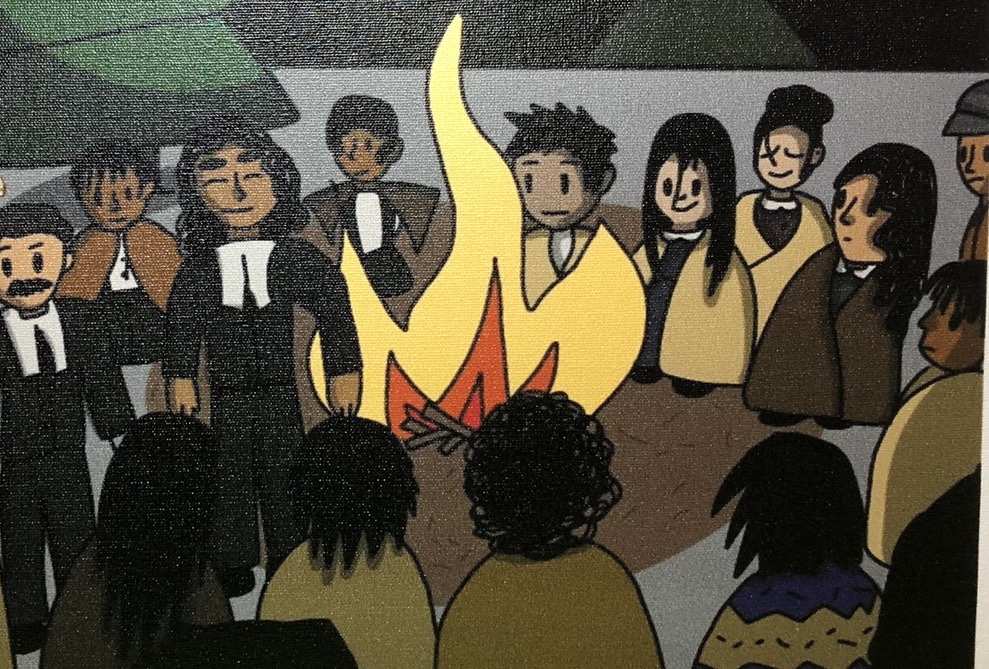
250 years ago today, on March 13, 1773, our ancestors gathered in Mohegan to discuss plans to form their own Native town, away from the decimating and demoralizing influence of the Europeans. Joseph Johnson (Mohegan/Brothertown), “the first mover of this design”1, called the Indians of Mohegan, Montauk, Narragansett, Niantic, Farmington, Stonington, and Groton together.
It was decided to ask the Oneida, our northwestern brethren, for a tract of land upon which we and our children could live in peace. Then, as now, our Oneida brothers welcomed us. In 1774, a land agreement was signed.
In March and April of 1775, the ablest individuals left their homes in Farmington, Montauk, and Narragansett, and went on ahead to forge the new town. They built homes and planted corn. Among them were Joseph Johnson, Elijah Wampy (Tunxis/Brothertown), David Fowler (Montauk/Brothertown) and Samuel Niles (Narragansett/Brothertown)2. More people followed.
A couple of years later, forced to flee for their lives amidst the dangers of the Revolutionary War, the majority of our people found temporary shelter with the Stockbridge in Massachusetts. After seven years, when the fighting had ceased, we returned to our Oneida home, bringing our Stockbridge brethren with us. Since then, our two tribes have been inseparable.
Shortly after their return, through the help and pen of Reverend Samson Occom (Mohegan/Brothertown), our formal naming and founding was memorialized. On Monday, November 7th, 1785 Occom wrote in his journal, “But now we proceeded to form into a body politick, we named our Town by the Name of Brotherton, in Indian Eeyawquittoowauconnuck.”
Happy 250th anniversary, Brothertown!
For a more in-depth look at the formation of the Brothertown Indians, please see “Building Brothertown: From Farmington To Brotherton” at https://brothertowncitizen.files.wordpress.com/2022/12/tunxis-project-final-draft-122922.pdf or find the video presentation at the bottom of this page: https://brothertowncitizen.com/stories-of-the-brothertown-indians-podcast-episodes/
1 See Joseph Johnson’s June 2, 1774 letter to Governor Jonathan Trumbull and the Connecticut Assembly in To Do Good to my Indian Brethren, by Laura Murray, pp233-234.
2See “Joseph Johnson to Colonel Guy Johnson” March 25, 1775 pp 255-256, and “David Fowler to Colonel Guy Johnson” Saturday, April 8, 1775 pp 259-260, in To Do Good to my Indian Brethren, by Laura Murray.


Pingback: Happy 250th Anniversary!